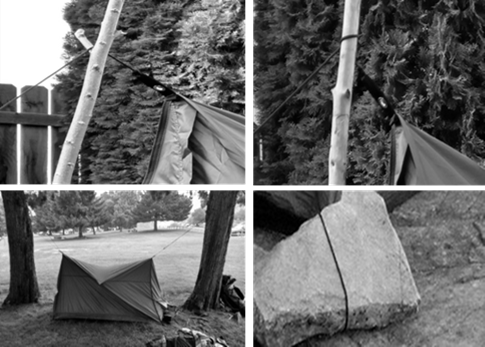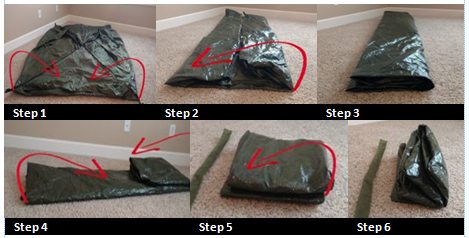HOW TO REDUCE CONDENSATION
Almost all tents are waterproof, but at times condensation can be so bad that you think your tent is leaking even when it is dry outside. Here are some important tips so this does not happen to you!
#1: Don’t Quit Breathing. The average person breaths out an entire pint of water each night while sleeping. While not breathing would do more than all the remaining tips combined to reduce condensation, we don’t recommend it.
The following tips are in no particular order, and you may find one works better than the others.
LOCATION LOCATION LOCATION
Yes, picking the right location can greatly reduce condensation! Here are some suggestions:
· Pick a location that is at least 50 feet from standing water, lake or river.
· Don’t set up your tent on living matter (green grass is green because it is wet).
· Set up under trees, not in an open field (condensation is considerably less in the trees, as overhead branches provide an extra layer of protection, as well as a surface for condensation).
VENTILATION
· Set your tent up so that any breeze is blowing at the door or the vents; this will increase ventilation.
· Leave the outer door open; only close it if it starts raining.
· Make sure vents are open.
DON’T ADD WATER
· Many people will keep their wet gear inside their tent with them at night, Don’t do this!
· Move all wet gear, socks, shoes, and packs out of the tent. You should consider bringing a small tarp for wet gear or leave it in another place outside your tent. Drying wet gear in your tent at night will add to condensation, and will most likely not dry any of your gear anyway.
ADDITIONAL SET UP TIPS & TRICKS
TIPS FOR SAGGING CORNERS
Setting up a trekking pole tent for the first time can be challenging and takes practice. The most common issue with this tent is sagging corners. This can usually be fixed by loosening the side guy lines and back guy lines, raising the trekking pole as much as possible, and pulling the vestibule out tightly.
IF YOU DO NOT HAVE TREKKING POLES
If you do not have trekking poles find a low hanging branch and center the tent under the branch before staking the four corners. Then secure a rope or guy line from the peak of the tent to the branch.
For ultralight campers you may want to leave the stakes behind, rocks can be used in place of stakes. Paracord may be needed for this option. Tie the paracord to the corners. Wrap the paracord around large rocks and pull the corners tight. This method can also be used to set up the tent on rocky surfaces or where putting stakes into the ground is not possible.

WATERPROOFING
Our tent seams come taped and don’t need to be seam sealed as the tent should be fully waterproof. That being said, the factory seam seal job is not always perfect. We recommend Gear Aid Seam Grip WP + https://www.rivercountryproducts.com/product/seam-grip-wp-gear-aid/.
We do recommend seam sealing the corners of your tent with Gear Aid Seam Grip WP. To seam seal:
1. Turn corners inside out, or set the tent up.
2. Liberally apply seam sealer to any cracks in the seam tape inside the tent and exposed seams at the corner. Focus on where the seams come together at the corners.
3. Let dry for 24 hours.
For UV protection you can use a waterproofing spray. We usually use the one from Walmart. https://www.walmart.com/ip/V-I-P-Silicone-Water-Guard-Water-Repellent-13-13-Ounces-Weatehr-Resistant/52130847
FOLDING INSTRUCTIONS

1. Lay your tent flat, with the tent floor on the ground and all cords and fabric lying within the four corners of the tent.
2. Fold the edges inward so that all cords and fabric are contained within the tent floor.
3. Fold in one more time. The tent should now be a long flat rectangle with all loose fabric tucked inside the tent.
4. Now fold edges inward again. This further contains all loose parts of the tent so nothing can come out when rolling the tent.
5. Now fold the edges together again creating a square.
6. Fold the edges together one more time forming a small rectangle.
7. Finally, roll or fold the rectangle up and tie with a piece of cloth. Bag the tent. It will be about the size of a football.

